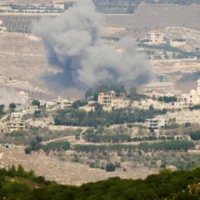Brussels (The Brussels Morning Newspaper) – The defence ministers of Estonia, Latvia, Lithuania, and Poland assembled in Daugavpils, Latvia, to mobilise behind the Baltic Defence Line – a fortified border scheme – and push for its grant from the European Union.
The Estonian defence minister, Hanno Pevkur, stated in a statement that the Baltic Defence Line has acquired momentum because the Baltic Sea allies share the same security problems. Coordinating closely with Poland is essential, and Estonia also notices opportunities to expand collaboration with northern allies, particularly Finland. Pevkur stated that the project isn’t just about supporting NATO’s forward defence concept; it’s also about shoring up the European Union’s borders, which is why the EU must be part of the budget equation.
How do Estonia, Latvia, and Lithuania collaborate on defence?
The Baltic Defence Line will extend along the borders of Estonia, Latvia, and Lithuania with Russia and Belarus. It’s developed to deter military threats with a network of defensive structures, supporting NATO’s new strategy of protecting allied territory from the very first metre.
Poland, encountering its own security challenges, reported its East Shield project in May, signalling an outstanding regional push for stronger defence infrastructure. Estonia fields about 6,500 active military personnel, supported by up to 60,000 in reserves, emphasising its support on mobilisation. Latvia, with about 6,000 active soldiers and around 16,000 in reserves, shares similar strategic concerns.
Lithuania employs a standing force of 22,000 troops, including conscripts and resources, supporting the region’s deterrence posture. However, the heavyweight in the party is Poland, whose armed forces surpass 160,000 personnel, along with 30,000 in territorial defence forces, providing it a central role in the region’s military readiness.
The ministers also discussed Ukraine’s strategies for building defensive fortifications, understanding from its wartime incident, and toured Latvia’s defence installations in Silene.
Estonia’s strategy for the Baltic Defence Line will develop in three stages. The first two phases will see the building of 40 support points and 12 fully fitted storage areas. An additional eight support points will track. The project draws laboriously on NATO’s Madrid Summit declaration from 2022, which redefined regional security. The Baltic Defence Line will be a variety of obstacles and fortifications spread across the terrain to disrupt enemy advances and allow defence forces to engage on favourable terms.



